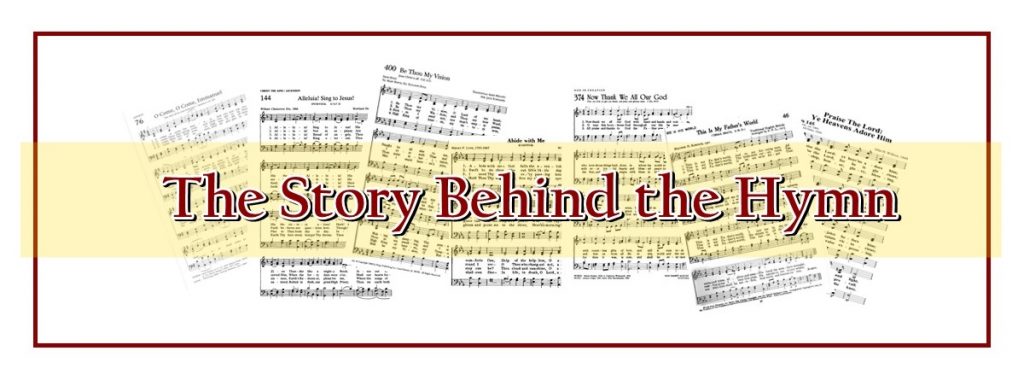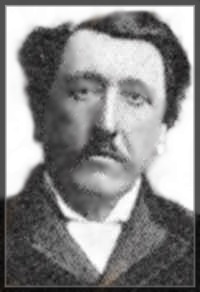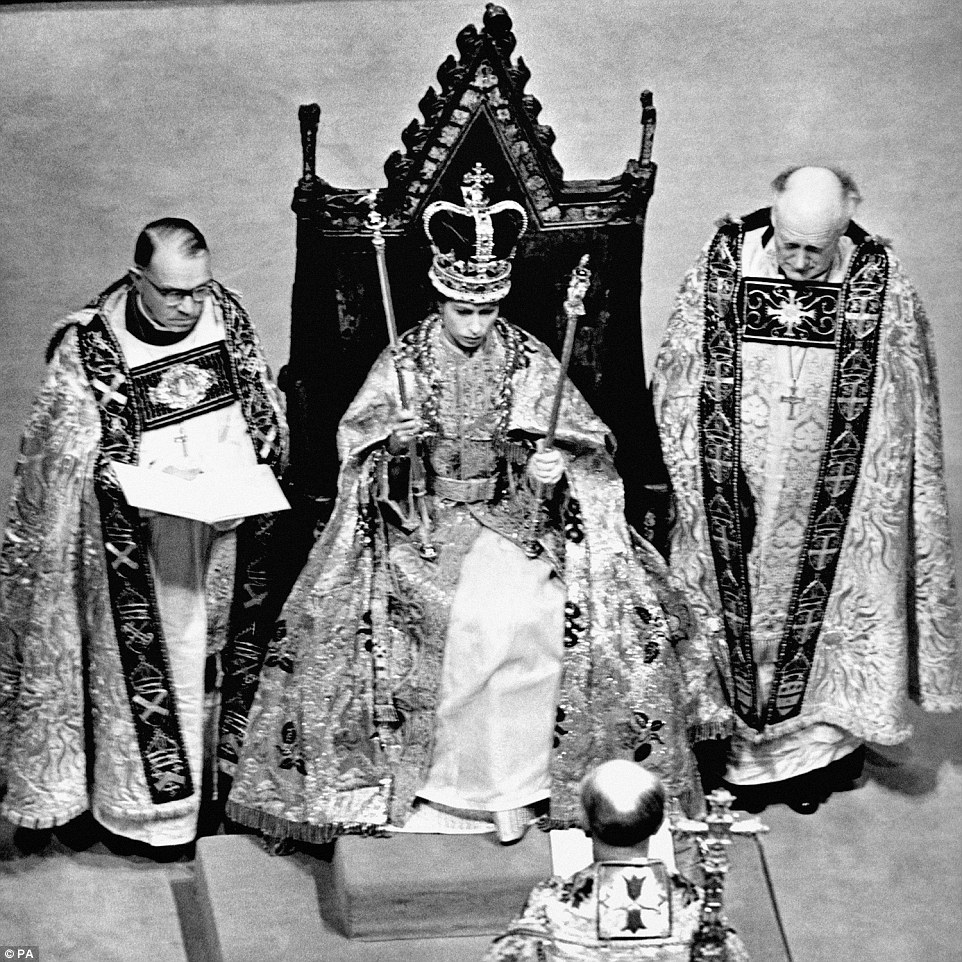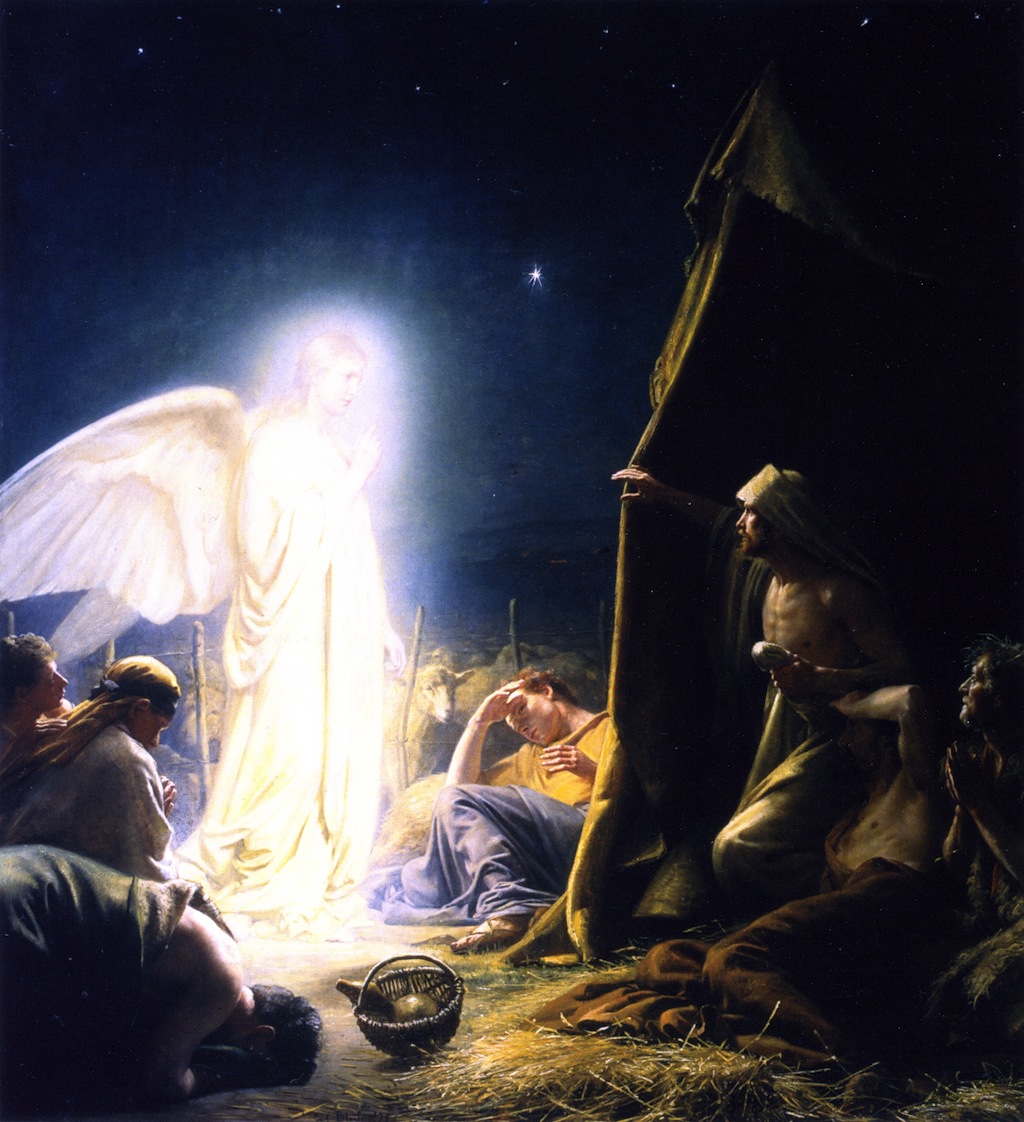The Story Behind the Hymn

Contents
Of the Father’s Love Begotten
[as published in the Advent/Christmas 2018 issue of The Anglican Planet]
Meditation upon a Christmas hymn: Confessing the Faith

Of the Father’s Love Begotten
Prudentius c. 400 Latin
Tr. by Rev. J.M. Neale 1854 & Rev. H.W. Baker 1861
DIVINUM MYSTERIUM 11th century
The hauntingly beautiful “Of the Father’s Love Begotten” transports us into the very Mystery of the Incarnation by a tune fittingly titled, “Divinum mysterium.” Unlike its jauntier carol cousins I don’t ever recall it being captured as mall Christmas ‘muzak.’
The hymn is a perfect liturgical ‘pairing’ with the traditional Christmas Gospel of John. Both draw us to peer into ‘the story behind the story’ –“The Word was made flesh…and we beheld His glory!” It also is a fitting accompaniment to our confession of the Faith in the Nicene Creed, and our joining in the song of the angels for the Holy Nativity, the Gloria in Excelsis, both part of our Christmas services.
This hymn feels like a fulfillment of the equally haunting and ageless Advent hymn, O Come, O Come, Emmanuel and the prelude to other timeless hymns of the Faith like St Patrick’s Breastplate. Hearing, and better still, singing these great ancient hymns allows us to feel a part of something infinitely bigger, older, deeper and grander. They take us out of ourselves and place us in the Presence of the Living God. They convey us, while still very much grounded in this world He loves so much, to the experience of the transcendent, numinous and, literally, awe-inspiring. They stir in us something at once strange and yet richly familiar as our deepest being resounds with the recognition of ‘the image of God’ and reaches out to grasp it in Him who is the very express image of the Father and descends to our plane to reach out to us with infant hands.
Let’s reflect, verse by verse, on this hymn reclaimed from the Early Church for us by the ingenious mind and pastoral heart of its translator, the Reverend John Mason Neale. In doing so, let’s interweave it with words from the Nicene Creed, the Gloria in Excelsis, and the Liturgies of the Church. In this way Scripture, Hymnody, Creed and Liturgy can re-echo and resound upon each other in our hearts and minds and voices.
Verse 1. Our creedal faith in Christ tells us He is “the only-begotten Son of God, Begotten of the Father before all worlds; God, of God; Light, of Light; Very God, of Very God; Begotten, not made; Being of one substance with the Father;” We can understand one generation being ‘begotten’ by the previous one – in time. But this begetting of Equal by Equal, with no before or after, no greater or lesser, is far beyond our understanding, yet without accepting this deep mystery of our Faith, none of the New Testament, or the life of the Church makes sense and calling Jesus “Alpha and Omega” would be unutterable blasphemy. Accepting the Mystery of the eternally begotten One, we now rightly praise the Son conceived in Mary’s womb as God’s Son too, and truly, “Beginning and End” – her Lord and ours, Evermore and evermore.
Verse 2. “Through whom all things were made” Nicaea’s Creed declares about this Eternally-begotten Son. And our hearts echo that Truth back in the hymn’s words, “at His word the worlds were framed.” Looking up at starry (or snowy) heavens on Christmas Eve we see age-old wonders of the sky, manifesting, here on ‘our fragile island home,’ the re-echoing throughout the cosmos of the results of “He commanded; it was done.” The Uncreated Light bathes us in remotest starlight that can take over 13 billion years to reach us, travelling at 186,000 miles per second, while tending this garden He has put under our stewardship “beneath the shining of the moon and burning sun.” Evermore and evermore.
Verse 3. When we confess, “Came down from heaven, And was incarnate by the Holy Ghost of the Virgin Mary, And was made man,” many outwardly (and all should inwardly) ’bend the knee.’ Of course, “that Birth for ever blessed” we sing of is the result of the holiest ‘pregnant pause’ ever, since we must never forget that the Incarnation truly begins at the very moment of the virgin-Conception of that tiny seed growing in Blessed Mary, coming to happy fruition when “the Babe, the world’s Redeemer, first revealed His sacred face.” Evermore and evermore.
Verse 4. A centuries-long line of prophecies come to fulfilment at Christmas. Zechariah is the one who prophesied the last Prophet, his own son, John the Baptist, proclaiming in his Spirit-filled song that, “the Lord God of Israel…hath visited, and redeemed his people…As he spake by the mouth of his holy Prophets, which have been since the world began.” We too confess, in our Creed, that the Holy Spirit has “spoken through the prophets.” In song we offer thanks to “the long-expected,” as Creation praises its Lord. Evermore and evermore.
Verse 5. Our creed confesses God as “Maker of heaven and earth, And of all things visible and invisible.” This speaks chiefly (besides strange new things that science investigates, such as dark matter) of the angelic realm. As with the Gloria in Excelsis, we are caught up into the celebration of the angelic hosts that praise “our God and King.” We, like shepherds and magi of old, are called to join with them in adoration at this festival of heaven come to Earth. “Let no tongue in earth be silent,” but let every voice “in concert sing.” Evermore and evermore.
Verse 6. This verse continues the theme of the whole Creation,” visible and invisible,” joining in unending adoration. Here, “all sorts and conditions” of people, old and young, are called, “with glad voices answering,” to “let their guileless songs re-echo” those of the angels. This calls us to take our part, as living members of His “One, Holy, Catholic and Apostolic Church” to render His most worthy praise. Evermore and evermore.
Verse 7. We end, fittingly, with a doxology, or praise of the Most Holy Trinity. The Son, being eternally “Begotten of the Father,” and now, “incarnate by the Holy Ghost of the Virgin Mary,” is worshipped by heaven and Earth in concert as the same One who “shall come again with glory” in the “eternal victory” of that kingdom “that shall have no end.” Let us all offer our “high thanksgiving” with “unwearied praises” for this Christ, Son of the Living God, who is now, by His Holy Incarnation and Blessed Nativity, also our very Brother. Let us continue, unworthy as we are, to offer this “our sacrifice of praise and thanksgiving” – not just throughout the great Twelve Days of Christmas, but truly, Evermore and evermore. AMEN!
Alleluia! Sing to Jesus
 William Chatterton Dix (b. June 14, 1837; d. Sept. 9, 1898). William Chatterton Dix, the son of a surgeon, was born in Bristol, England. He eventually had a career in marine insurance in Glasgow. Dix took a great interest in poetry and in the symbolism involved in our worship services. He found great comfort in writing verse, and this is evidenced by the many hymns credited to him. Someone once said of Dix, “Few modern writers have shown so single a gift as his for the difficult art of hymn-writing.”[1] Many of his hymns and carols may be familiar to you, including, “What Child is This?”, “As with Gladness, Men of Old”, and, “Come unto me, you weary”.
William Chatterton Dix (b. June 14, 1837; d. Sept. 9, 1898). William Chatterton Dix, the son of a surgeon, was born in Bristol, England. He eventually had a career in marine insurance in Glasgow. Dix took a great interest in poetry and in the symbolism involved in our worship services. He found great comfort in writing verse, and this is evidenced by the many hymns credited to him. Someone once said of Dix, “Few modern writers have shown so single a gift as his for the difficult art of hymn-writing.”[1] Many of his hymns and carols may be familiar to you, including, “What Child is This?”, “As with Gladness, Men of Old”, and, “Come unto me, you weary”.
In addition to writing pieces of prose and verse for various magazines and hymns, he published two devotional books, Light; and The Risen Life, 1883; and a book of instructions for children entitled The Pattern Life, 1885.
He died September 9, 1898, Cheddar, Somerset, England, and was buried at the parish church, Cheddar, Somerset, England.
William Dix wrote “Alleluia! Sing to Jesus” as a communion hymn for Ascension Sunday. This hymn was originally called “Redemption through the Precious Blood” and was inspired by Revelation 5:9, “And they sang a new song, saying, You are worthy . . . for you were slain, and have redeemed us to God by your blood.” The hymn proclaims “His the triumph, His the victory alone.” “Jesus . . . hath redeemed us by His blood.” And, “Though the cloud from sight received Him,” sings of Christ’s ascension. Even as He assured us He would not leave us as orphans, this hymn also reminds us of His faithful promise, “I am with you evermore.” The hymn expresses praise to Jesus for what He has done and is doing for us.
The first verse praises Christ for His victory. Throughout the Old Testament, the coming Messiah is pictured as sitting upon the throne with His scepter, both symbols of kingship and authority – : Psalm 45: 6, for example: “Your throne, O God, is forever and ever. The scepter of your kingdom is a scepter of uprightness”. Christ, the Lamb sacrificed for us, gains the final victory over sin and death to provide redemption through His blood: Ephesians 1:7: “In him we have redemption through his blood, the forgiveness of our trespasses…”
The second verse praises Christ for His promises and reminds us of them – they are for all of us if we come to Him in faith and trust and accept Him. Jesus told His disciples that He would not leave them “comfortless,” a term which in the original language literally means ‘orphans’: see John. 14.18-20 – “I will not leave you as orphans; I will come to you. Yet a little while and the world will see me no more, but you will see me. Because I live, you also will live. In that day you will know that I am in my Father, and you in me, and I in you.” And, that He is always with us! (Matthew 28:20 – “I am with you always, to the end of the age.”)
The third verse praises Christ for his Intercession on our behalf. Christ ever pleads with God for us, for our needs and forgiveness. (Hebrews 9:11) We also sing praise to Him that the source of our life is in Him as our true “food and stay” – see John 6.53-58. If we draw close to Christ and, through him to the Father, He continually acts as our advocate to plead for us – see Hebrews 7:25. Can we have a better One to argue on our behalf?
Verse four praises Christ for his Lordship – Having been born fully man he knows and owns our human nature and, being also fully God, he can carry that frail nature to the Throne of God for healing and redemption (1 Timothy 3:16 and Hebrews 9: 11-12). We, in our worship, ever acknowledge Him as the source of our life – on earth and through eternity – the actual sacrifice of Christ is repeated in the observance of the Eucharist (our true “Thanksgiving”).
Throughout the hymn there is an emphasis on Christ being with us at all times as our Redeemer, Intercessor, Lord and Friend who is our heavenly manna, sustaining us with spiritual nourishment and for this, it is right and meet to always give thanks and praise.
1 Alleluia![2] Sing to Jesus!
His the sceptre[3], his the throne;
Alleluia! His the triumph,
his the victory alone.
Hark! The songs of peaceful Sion[4]
thunder like a mighty flood.
Jesus, out of every nation,
Hath redeemed us by his blood.
2 Alleluia! Not as orphans
are we left in sorrow now;
Alleluia! He is near us;
faith believes nor questions how[5].
Though the cloud from sight received him
when the forty days were o’er[6],
shall our hearts forget his promise,
“I am with you evermore”?
3 Alleluia! Bread of Heaven,
here on earth our Food, our Stay;
Alleluia! Hear the sinful
Flee to you from day to day.
Intercessor, Friend of sinners,
Earth’s Redeemer, plead for me,
where the songs of all the sinless
sweep across the crystal sea [7].
4 Alleluia! King eternal,
Thee the Lord of lords we own:
Alleluia! born of Mary,
earth thy footstool, heaven thy throne:
Thou within the veil, hast entered [8],
robed in flesh, our great High Priest:
Thou on Earth both Priest and Vicitim,
in the Eucharistic Feast!
[1] James Moffatt, Handbook to the Church Hymnary, Oxford University Press, 1927, p. 318
[2] The word “Alleluia” comes from Hebrew for “Praise ye Yah!” – or, “Praise ye Yahweh” and is translated as “Praise ye the Lord!” It is an expression of thanksgiving, joy and triumph.
[3] Sceptre – an ornamented staff carried by rulers on ceremonial occasions as a symbol of sovereignty. At her coronation, Queen Elizabeth II was handed two sceptres and, later, an orb. Both the sceptres and orb are symbols of authority. The orb is a symbol of Godly power. A cross above a globe, It represents ‘Christ’s dominion over the world’, as the Monarch is God’s representative on Earth. When the Queen was handed the sceptres the Archbishop of Canterbury said, “Receive the rod of Equity and Mercy. Be so merciful that you be not too remiss; so execute justice that you forget not mercy. Punish the wicked, protect and cherish the just, and lead your people in the way wherein they should go.”

Queen Elizabeth at her Coronation having received the Royal sceptres.
[4] Sion or Zion: refers to one of hills on which Jerusalem was built. When David took it from the Jebusites (Joshua 15:63 ; 2 Sam. 5:7) he built on it a citadel and a palace, and it became “the city of David” (1 Kings 8:1 ; 2 Kings 1 Kings 19:21 1 Kings 19:31 ; 1 Chronicles 11:5). In the later books of the Old Testament this name was sometimes used (Psalms 87:2 ; 149:2 ; Isaiah 33:14 ; Joel 2:1) to denote Jerusalem in general, and sometimes God’s chosen Israel (Psalms 51:18 ; 87:5). In the New Testament (Sion is the Greek term for Zion) it is used sometimes to denote the Church of God (Hebrews 12:22), and sometimes the heavenly city (Revelation 14:1).
[5] This line often leads to confused looks on the faces of those who ponder it. “Nor” is often used to link two negative concepts together, but believing is not a negative concept. “Faith neither doubts nor questions how” would work, but “faith believes nor questions how” doesn’t seem right, does it? It has been pointed out that it is simply a somewhat old-fashioned use in which “nor” means “and not”. One of the definitions of “nor” is that it can be used after an affirmative clause, or as a continuative, in the sense of “and not” as in, They are happy, nor need we worry. Someone once suggested that it could be changed to “Faith believes, and questions not how”, but it was then pointed out that “change would fit into the tune HYFRYDOL because of the eighth notes that occur on the syllable “ques-” (which your version sets individually to “ques-tions”), but it actually lengthens that line from seven to eight syllables, thereby ruining the regularity of the meter and potentially preventing the words from being set to other 8.7.8.7 D hymn tunes.” The life of a hymn writer may be more difficult than it seems!
[6] See Acts 1: 9-11 for an account of the Ascension of Jesus which took place forty days after the Resurrection.
[7] See Revelation 4:6 and 15:2.
[8] See Hebrews 6:19-20
Joy to the World
[first published in The Anglican Planet]
Isaac Watts, 1719
ANTIOCH
After Handel (1685-1759), arranged by Lowell Mason (1792-1872)
 I REMEMBER how we came to own it, but I was never quite sure why. We were a young family with limited resources, so maybe it was the price that sealed the deal. It certainly was not because of its beauty or practicality. Still, it was ours and for years the fake clay wall hanging of four words strung vertically beneath a floating angel on a rope ended up on our wall at Christmas. “Joy to the World” it read in all of its murky plaster – hardly the vibrancy of most Christmas decorations. Every year it was relegated to a place progressively more distant from the hub of household activities, until one year it hung in a dim recess of a hallway, forgotten when it came time to pack things away. There it remained, virtually ignored, until someone inquired why there was a Christmas decoration up during Lent.
I REMEMBER how we came to own it, but I was never quite sure why. We were a young family with limited resources, so maybe it was the price that sealed the deal. It certainly was not because of its beauty or practicality. Still, it was ours and for years the fake clay wall hanging of four words strung vertically beneath a floating angel on a rope ended up on our wall at Christmas. “Joy to the World” it read in all of its murky plaster – hardly the vibrancy of most Christmas decorations. Every year it was relegated to a place progressively more distant from the hub of household activities, until one year it hung in a dim recess of a hallway, forgotten when it came time to pack things away. There it remained, virtually ignored, until someone inquired why there was a Christmas decoration up during Lent.
“Joy to the World” is not a quintessential Christmas hymn; it was never intended to be. Written by Isaac Watts as a paraphrase of Psalm 98 for the collection, The Psalms of David: Imitated in the language of the New Testament, and applied to the Christian state and worship (1719), it was titled “The Messiah’s Coming and Kingdom.” In it one finds no mention of the Holy Family, shepherds, stars, manger or Magi. What one does find is profound imagery and clear teaching about the Second Advent of Christ. How very appropriate it would be to use it in Advent when the Church focuses on the Second Coming and the reminder that we should always be preparing for it in a posture of repentance, yes, but also great anticipation and joy. In the Book of Common Praise (1938) the hymn is not in the Advent section, nor the Christmas or Carols sections; instead, it is found in “Praise and Thanksgiving” under “General Hymns.”
It has, though, come to be associated with Christmas. But unfortunately, like so much of the Church’s traditional teaching, it is sometimes altered so as not to offend our modern sensibilities. Too often today the third verse is dropped. It has been suggested that this omission is because the references for it are not found in Psalm 98, but it is what Watts wrote and it certainly underscores our salvation story. “No more let sins and sorrows grow, nor thorns infest the ground, He comes to make His blessings flow, far as the curse is found.” I remember it being said that it was just too “depressing” to repeat three times “Far as the curse is found” at Christmastime. Yet what better time to be reminded of the reason for God’s Incarnation?
It may seem a cliché, but it is worth repeating: there is no hard wood of the manger without the hard wood of the Cross. This hymn calls us to look behind the glitter of our Christmases to where our faith calls us to get down and dirty with the reality that sin separates us from God. The Incarnation happened in order to begin healing the wound sin has created. Advent and Christmas offer that opportunity to focus on what is coming…but, more importantly, Who is coming. Any lens through which we view the truth about the Incarnation should, of necessity, focus our attention on the anticipated fulfillment of Christ’s promised return when Heaven and Earth in unison will ring out with song and exclamations of joy. When Christ will judge with Truth, Grace, Righteousness and Mercy. Entangled in our self-centred preoccupations, we quickly become distracted from where our true focus needs to be: preparing for that Second Coming – “Let earth receive her King.”
It may be time again for our home to have hanging in a prominent spot the first line of a hymn that calls us to prepare our hearts – and minds –to receive Him now, and at that Second Coming. May we heartily employ the joyous Song of all Creation that will herald his Reign. May we all be prepared to sing – ‘Joy to the World; the Lord is come.”
Good Christian Men, Rejoice
[first published in The Anglican Planet]
John M. Neale, 1853
IN DULCE JUBILO
German Melody, 14th century
 WE ARE TOLD that carols, as opposed to hymns, were medieval tunes (both sacred and secular) for festive dancing accompanied by folk instruments, like drums. The lilting strains of “Good Christian men, rejoice” easily bring dancing to mind. It should not surprise us, then, to learn that its Dominican mystic composer was inspired by a dream-vision in 1328 of angels calling him to join them in joyous dance. The vision was to bring Heinrich Seuse (or Suso) “heavenly joys amid his sufferings” with a “song about the infant Jesus.” From there it made its way, circuitously through time, until a 1582 Latin copy from Sweden, via the British ambassador, was placed into the gifted hands of John Mason Neale in 1853. It was his loose translation that became the version we know today.
WE ARE TOLD that carols, as opposed to hymns, were medieval tunes (both sacred and secular) for festive dancing accompanied by folk instruments, like drums. The lilting strains of “Good Christian men, rejoice” easily bring dancing to mind. It should not surprise us, then, to learn that its Dominican mystic composer was inspired by a dream-vision in 1328 of angels calling him to join them in joyous dance. The vision was to bring Heinrich Seuse (or Suso) “heavenly joys amid his sufferings” with a “song about the infant Jesus.” From there it made its way, circuitously through time, until a 1582 Latin copy from Sweden, via the British ambassador, was placed into the gifted hands of John Mason Neale in 1853. It was his loose translation that became the version we know today.
Bereket Kelile’s 2013 blog entry recalls that both priest-composer (Seuse) and priest-translator (Neale) suffered at the hands of the Church establishment, centuries apart, because of their heart to serve Christ in the poor. Seuse, seeking to reach the common folk in their vernacular, wrote the carol using macaronic verse (alternating lines of Latin and German). Neale, a leading figure in the “Oxford Movement,” founded the Sisters of St Margaret who served among orphans, prostitutes and the ‘down and out.’ Both priest-musicians laboured to bring “good news to the poor.” The carol stands as testament to that. This ‘provenance’ may help us enter the spirit of the carol – or we may just enjoy a more medieval rendition of the tune, such as that by Maddy Prior and the Carnival Band on A Tapestry of Carols.
The Scripture verse above this carol in the Book of Common Praise (1938) is Luke 2:10, the message of the angel to the ‘down and out’ of that day, the shepherds. “Fear not; for behold I bring you good tidings of great joy, which shall be to all people.” Like that of Seuse’s angelic visitors, the message to the shepherds, as to us, is to allow this Good News to drive out our sorrows, sufferings and fears, with its truth of “perfect love.” The proper response to news of great joy is, well, to rejoice! And this call to rejoice with our whole being, “with heart and soul and voice,” echoes the Summary of the Law: to love Him with all our heart, soul, mind and strength. The voice is surely an expression of both mind and strength. When “heart and soul and voice” are united, then we truly praise God “not only with our lips, but in our lives” (BCP, pg. 15).
Each verse exhorts us to rejoice in the Christmas Gospel employing ‘homely’ language in tune with both composer’s and translator’s love for Christ’s poor.
Verse one calls us to “heed” the angelic message: “News! News! Christ is born today!”–each refrain repeated in emphasis of both their import and their joy. A more direct modern rendering of the original Latin, “The joy of our hearts lies in a manger and shines like the sun in the lap of His Mother,” is sung using Neale‘s homelier’ “Ox and ass before Him bow, and He is in the manger now.”
The original Latin carol, In Dulci Jubilo, has three further verses, echoed in the final two verses of Neale’s carol. We sing in the second verse of “endless bliss,” and respond, Joy! Joy! Christ has opened the door to heaven by His perfect Manhood, bridging the great chasm between our sins and the Father’s righteousness. This glory is promised us, as “heirs through hope of thy everlasting kingdom” (BCP, pg. 85), because “Christ was born for this!”
Verse three boldly and simply declares – “Now ye need not fear the grave!” We have Peace! Peace! because “Christ was born to save!” One of our Prayer Book’s “Comfortable Words” is “This is a true saying, and worthy of all men to be received, that Christ Jesus came into the world to save sinners!” (1 Timothy 1:15). It always does us well to recall that St Paul goes on to add “ – of whom I am chief!” Again, Neale’s ‘homely’ language reaches out to the lowly and does justice to words from the original’s last verse:
“O Love of the Father,
O gentleness of the Mother,
We were stained by our crimes;
thus Thou hast for us acquired the joys of heaven.”
Truly, Christ was born to save! Let this News of great Joy bring us His Peace. Amen and Amen!